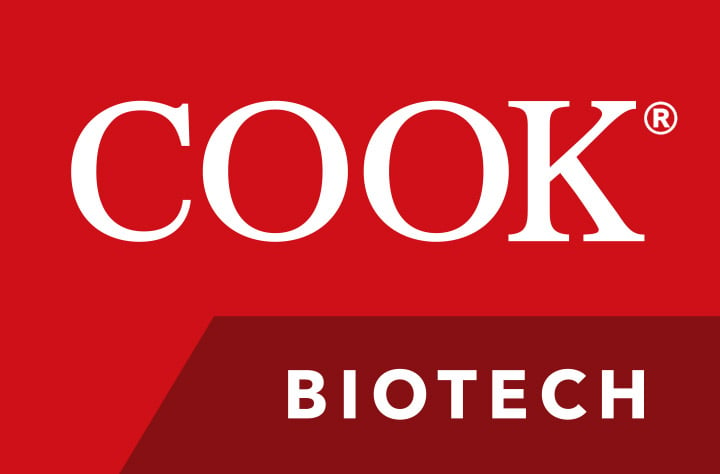A group from the University of Pennsylvania used SIS stem cells derived from gingival tissue to treat transected facial nerve and sciatic nerve crush injuries in rats
Both models showed that the functionalized nerve protectors repopulated with GiSCs significantly accelerated functional recovery and axonal regeneration. Furthermore, assessments of macrophage phenotype at the explant site demonstrated an increased pro-regenerative (M2) response and a decreased infiltration of M1 pro-inflammatory macrophages. These findings suggest that Schwann-like cells converted from GMSCs represent a promising source of supportive cells for regenerative therapy of peripheral nerve injuries, and that tubes made from SIS can help retain the cells at the site of injury for as long as 14 weeks.4
1 Zhang Q, Burrell JC, Zeng J, et al. Implantation of a nerve protector embedded with human GMSC-derived Schwann-like cells accelerates regeneration of crush-injured rat sciatic nerves. Stem Cell Res Ther. 2022;13(1):263.
2 Li X, Guan Y, Li C, et al. Immunomodulatory effects of mesenchymal stem cells in peripheral nerve injury. Stem Cell Res Ther. 2022;13(1):18.
3 Zhukauskas R, Fischer DN, Deister C, Alsmadi NZ, Mercer D. A Comparative study of porcine small intestine submucosa and cross-linked bovine type I collagen as a nerve conduit. J Hand Surg Glob Online. 2021;3(5):282–288.
4 Zhang Q, Nguyen P, Burrell JC, et al. Harnessing 3D collagen hydrogel-directed conversion of human GMSCs into SCP-like cells to generate functionalized nerve conduits. NPJ Regen Med. 2021;6:59.
